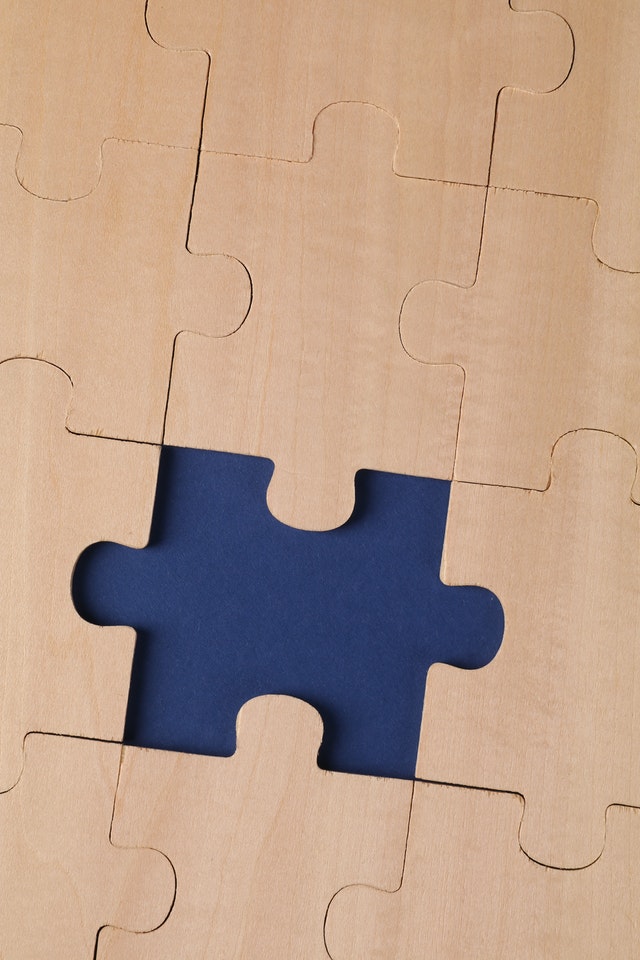
Setting the Stage
Why We Love Puzzles
There’s just something special about jigsaw puzzles, isn’t there? They’re a fantastic way to relax, spend quality time with family and friends, and challenge your mind. Plus, there’s that indescribable feeling of accomplishment when you finally fit that last piece into place.
The Magic of DIY Puzzle Boards
From boosting creativity to providing a unique sense of accomplishment, DIY puzzle boards are more than just a handy tool. They’re an expression of love for puzzles and a testament to your DIY skills. Plus, they offer a practical solution for puzzle enthusiasts – a designated space to work on puzzles without taking up the entire dining room table.
Getting Started: Gathering Materials
Your Trip to the Hardware Store
First things first, you need to gather all the materials for your DIY puzzle board. You’ll need:
- An MDF board for the base
- Plywood for the frame and drawers
- Wood glue
- Nails
- Power drill with drill bit
- Drawer knobs
- Felt feet
If you’re wondering where to find these materials, a trip to the local hardware store should do the trick!
Sustainable Life: Reusing Materials for Your DIY Project
Living a sustainable life isn’t just about recycling and conserving water. It’s also about reusing materials wherever possible. So, before you rush to the hardware store, take a look around your home. Perhaps you’ve got an old picture frame or a piece of plywood lying around that could be repurposed for this project.
Step-by-Step Guide: Making Your DIY Puzzle Board
The Fundamentals: The Puzzle Table
Choosing the Right Wood
The first step in creating your DIY puzzle board is to choose the right wood. Pine board is an excellent choice due to its durability and affordability. It’s also easy to work with, making it a favorite among DIY enthusiasts.
Size Matters: Deciding the Dimensions
Next up, you need to decide on the size of your puzzle board. This will largely depend on the size of the puzzles you usually work on. Make sure to leave some extra space around the edges to store loose pieces.
Building the Puzzle Board: The Process
Preparing the Base: The MDF Top
To start building your puzzle board, first cut the MDF board to the desired size. This will serve as the base of your puzzle board. Remember to sand down the edges to avoid any sharp corners.
Adding Character: Creating the Frame
A wooden frame isn’t just aesthetically pleasing, it also helps keep the puzzle pieces contained. To create the frame, cut four pieces of plywood to fit around the MDF top. Attach them using wood glue and nails, creating butt joints at the corners.
Stability is Key: Adding Wooden Supports
To ensure your puzzle board doesn’t bow under the weight of the puzzle, add some wooden supports under the MDF top. These center supports should be spaced evenly and attached using wood glue and nails.
Drawer Magic: Adding Storage to Your Puzzle Board
Drafting the Drawers
Storage is a key feature of any good puzzle board. To create the drawers, first draft a design based on the size of your puzzle board. Remember, the drawers need to be large enough to store your puzzle pieces, but small enough to fit under the puzzle board.
Crafting the Drawer Sides
Next, cut the plywood to the dimensions of your draft. These pieces will serve as the sides of your drawers. It’s a good idea to sand down the edges to avoid any splinters.
Installing the Drawers: The Power Drill Comes In
Once you’ve crafted the sides, it’s time to install the drawers. Use your power drill to create holes for the nails, then attach the sides to the base of the puzzle board. Don’t forget to ensure the drawers slide in and out smoothly.
A Touch of Class: Adding Drawer Knobs
Adding drawer knobs isn’t just practical, it also gives your DIY puzzle board a finished, professional look. Choose knobs that match the style of your puzzle board, drill holes in the appropriate spots, and screw them in place.
Unique Features to Enhance Your Puzzle Board
Creating Stopping Blocks: Keeping Your Puzzle Pieces Safe
Stopping blocks are a great way to keep your puzzle pieces safe and prevent them from falling off the board. You can make these by cutting small pieces of wood and gluing them to the edges of your puzzle board.
Add Felt Feet: Caring for Your Surfaces
Felt feet are small, circular pieces of felt that you can attach to the bottom of your puzzle board. They help protect your table or other surfaces from scratches. Plus, they make moving your puzzle board around a lot easier.
Thrift Diving: Decorating Your DIY Puzzle Board
Decorating your puzzle board is a chance to show off your personal style. Whether you paint it, add decals, or wood burn a design, the sky’s the limit. Remember, this is your project, make it yours!
DIY Puzzle Game Table: More Than Just a Puzzle Board
Coffee Table Transformation: From Ordinary to Extraordinary
Want to take your DIY project to the next level? Consider turning a coffee table into a puzzle game table. This way, you can leave a puzzle out for weeks without it getting in the way. Plus, it’s a great conversation starter!
Dining Room Table: Making Space for Family Fun
If you’re really serious about your puzzles, why not transform your dining room table into a puzzle game table? It might not be practical for everyone, but for those who love puzzles, it’s a dream come true.
Care and Maintenance for Your DIY Puzzle Board
The Golden Rule: Wood Glue and Its Uses
Wood glue is essential in any woodwork project. It’s used to create strong bonds between pieces of wood. Remember to always clamp the pieces together after applying the glue, and let it dry completely before moving on.
Protecting Your Puzzle Pieces: Storing Them Right
When not in use, it’s important to store your puzzle pieces properly to avoid losing any. The drawers in your puzzle board are perfect for this. Just remember to handle the pieces with care to avoid damaging them.
Wrapping Up: Enjoying the Fruits of Your Labor
Successful Blog Post: Sharing Your DIY Journey
Once you’ve completed your DIY puzzle board, why not share your journey in a blog post? It’s a great way to connect with fellow puzzle lovers and DIY enthusiasts. Plus, it’s always fun to show off a successful project!
FAQs
Can I turn my entire table into a puzzle board?
Absolutely! Just remember, this is a larger project that will require more materials and time.
What’s the ideal material for the puzzle board?
Pine board is a great choice due to its durability and affordability.
How to deal with loose pieces when storing puzzles?
The drawers in your puzzle board are perfect for storing loose pieces. Just remember to handle them
 Utility lines run all over the place. This includes power lines, water lines, gas lines, cable lines, and certain types of internet-specific lines. Anything that a company provides from afar must have a way to get to the customers. For utilities, these means have lines run from them to the customer. Most people are familiar with power lines stretch in all directions way up above on poles. However, many utility lines are underground. These lines are cannot be seen which means that, unless you were involved with putting them there, you are not going to know where an underground line might be. Now consider digging into the ground for a project. Maybe you are putting in a permanent swimming pool or are building a cellar. Now consider that there are utility lines running right underneath where you are digging. If you do not know they are there, you are likely to hit one. If it is a water line, it will cause a disruption in service and most likely some hefty fees. However, what if it is a gas line? There could be an explosion or at best a leak of toxic fumes. This is a dangerous situation. This is why you should never dig way down without first finding out if there are any utility lines in the area. Unfortunately, not many people know how to go about finding out this information. Thankfully, it is a simple process. What you will find here is information on what you need to do when you need to find utility lines.
Utility lines run all over the place. This includes power lines, water lines, gas lines, cable lines, and certain types of internet-specific lines. Anything that a company provides from afar must have a way to get to the customers. For utilities, these means have lines run from them to the customer. Most people are familiar with power lines stretch in all directions way up above on poles. However, many utility lines are underground. These lines are cannot be seen which means that, unless you were involved with putting them there, you are not going to know where an underground line might be. Now consider digging into the ground for a project. Maybe you are putting in a permanent swimming pool or are building a cellar. Now consider that there are utility lines running right underneath where you are digging. If you do not know they are there, you are likely to hit one. If it is a water line, it will cause a disruption in service and most likely some hefty fees. However, what if it is a gas line? There could be an explosion or at best a leak of toxic fumes. This is a dangerous situation. This is why you should never dig way down without first finding out if there are any utility lines in the area. Unfortunately, not many people know how to go about finding out this information. Thankfully, it is a simple process. What you will find here is information on what you need to do when you need to find utility lines.